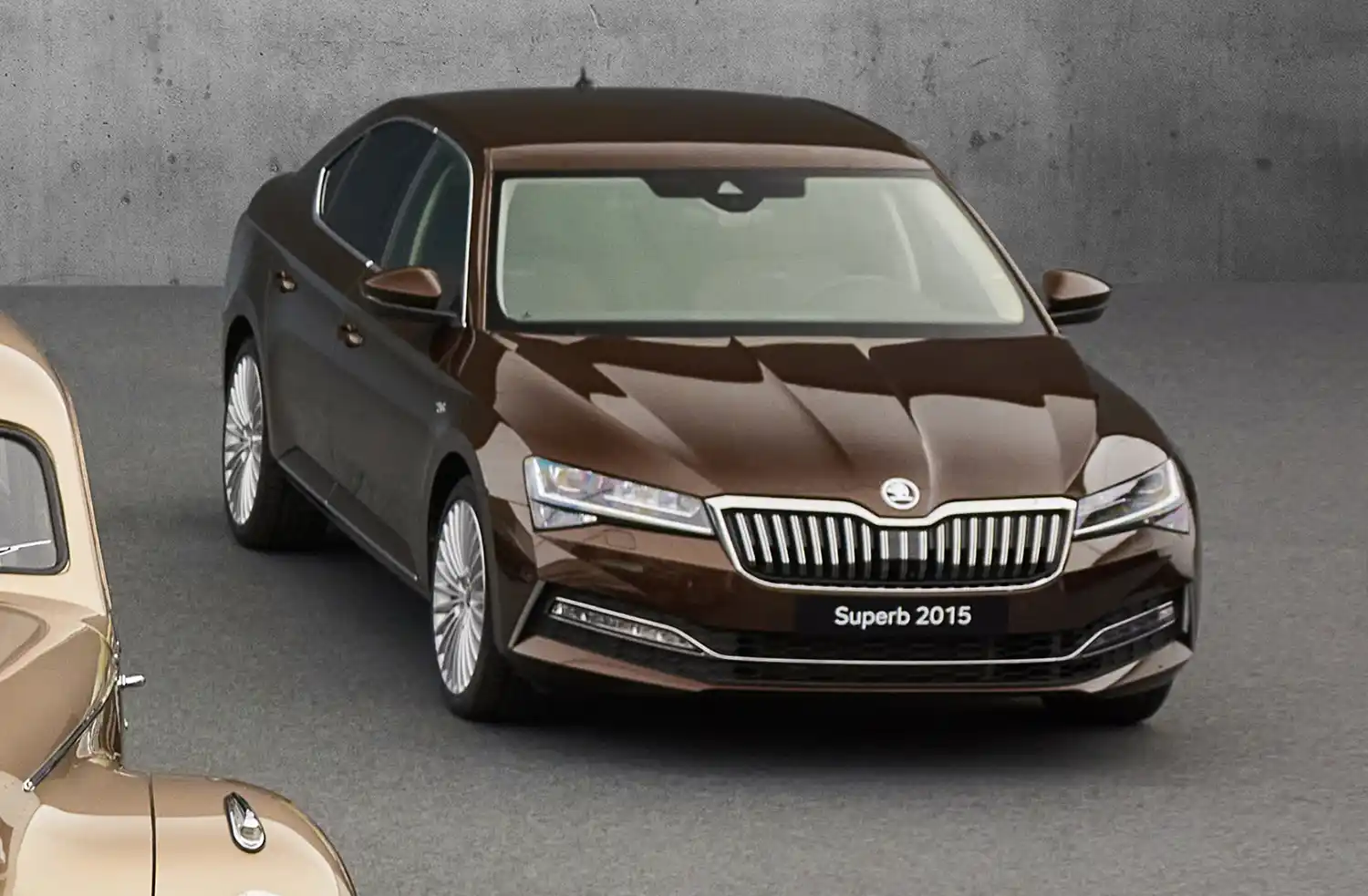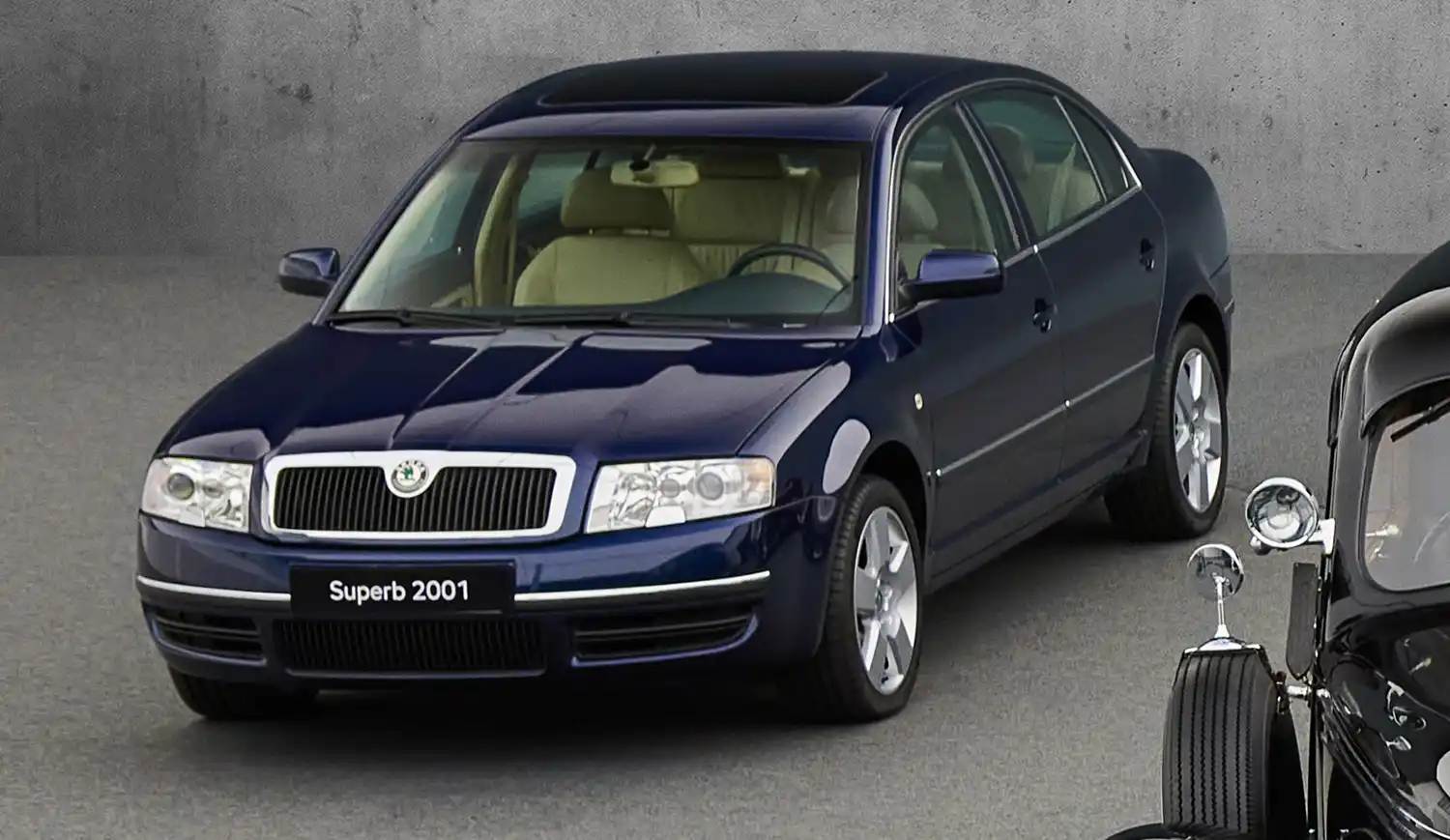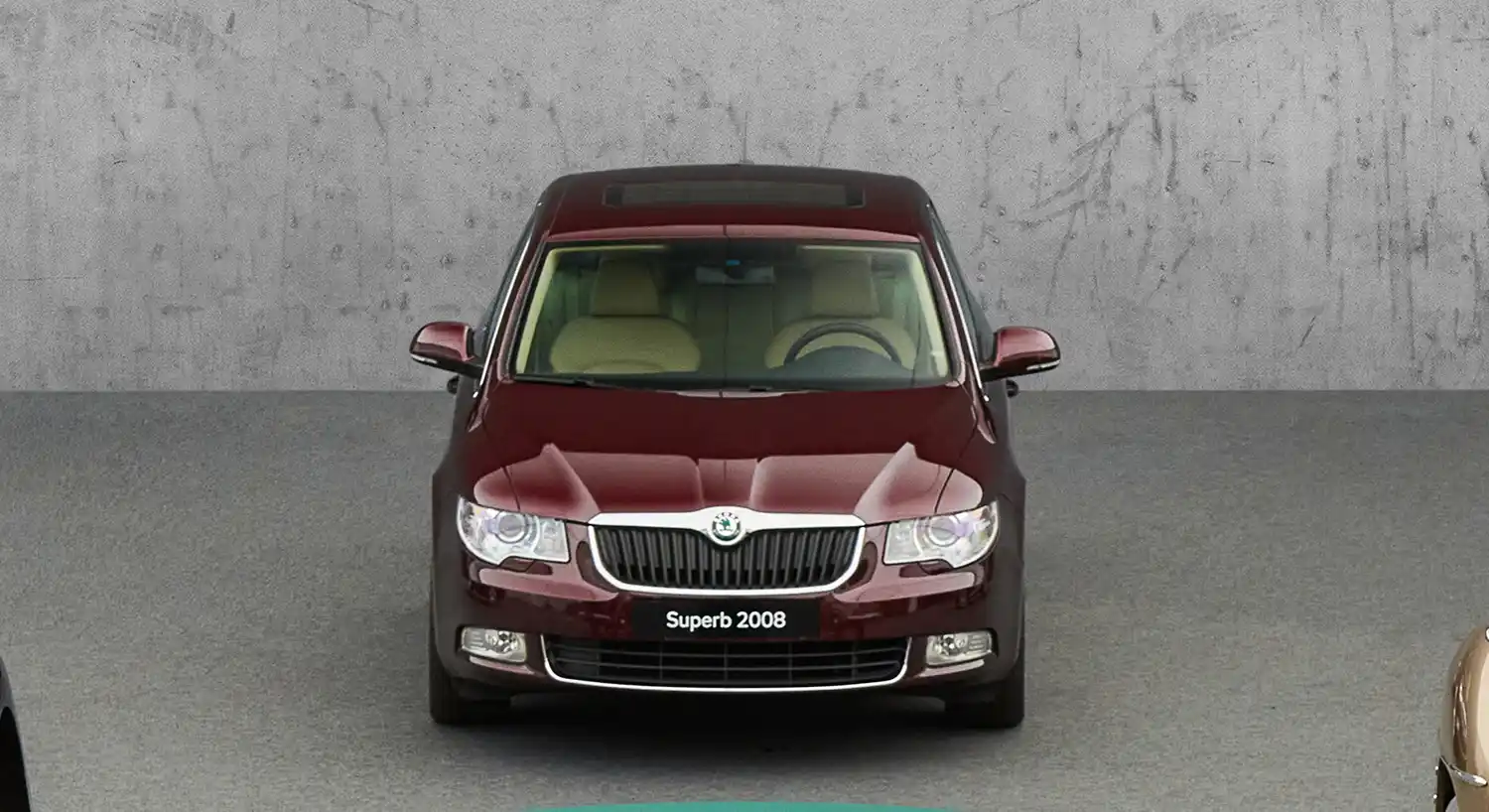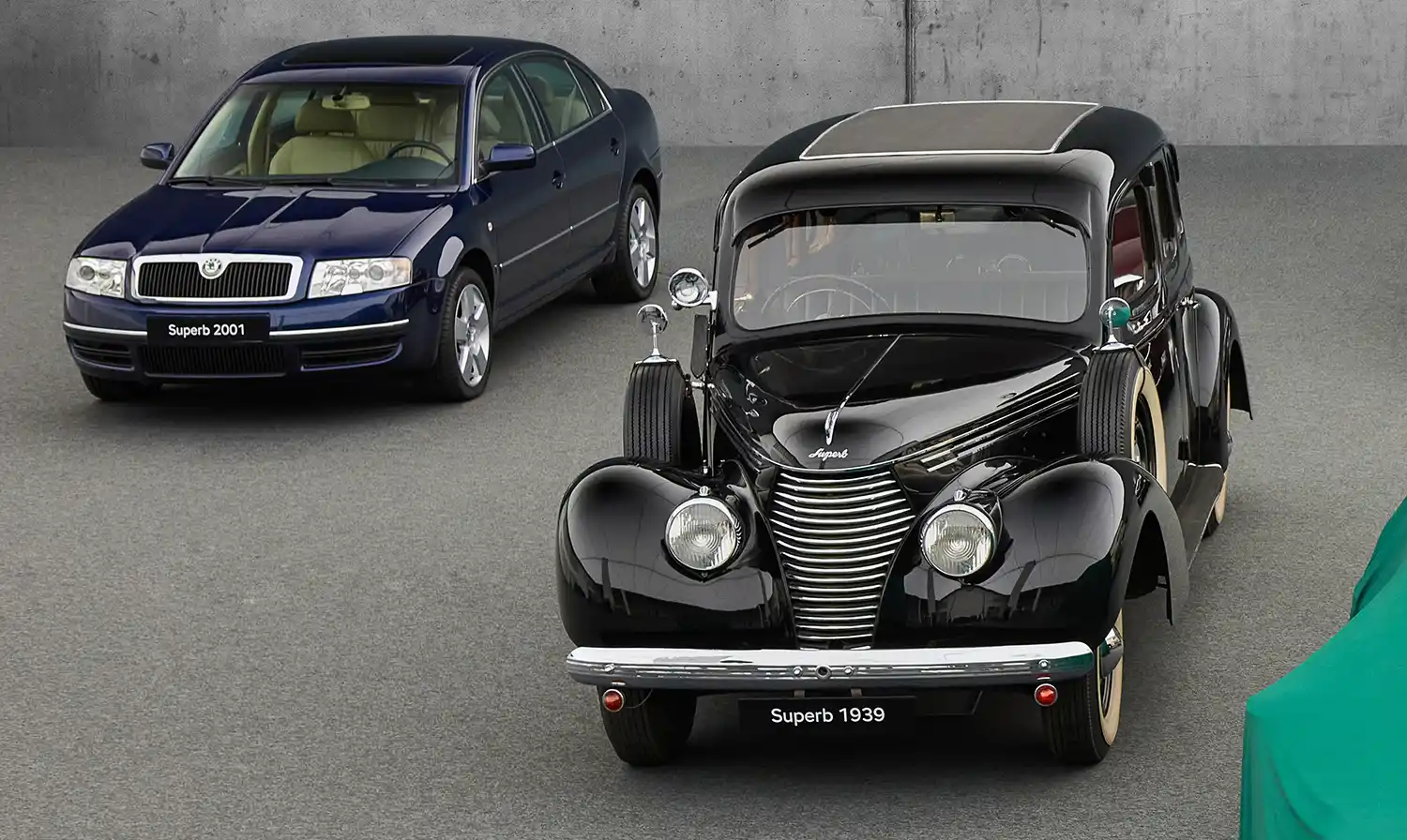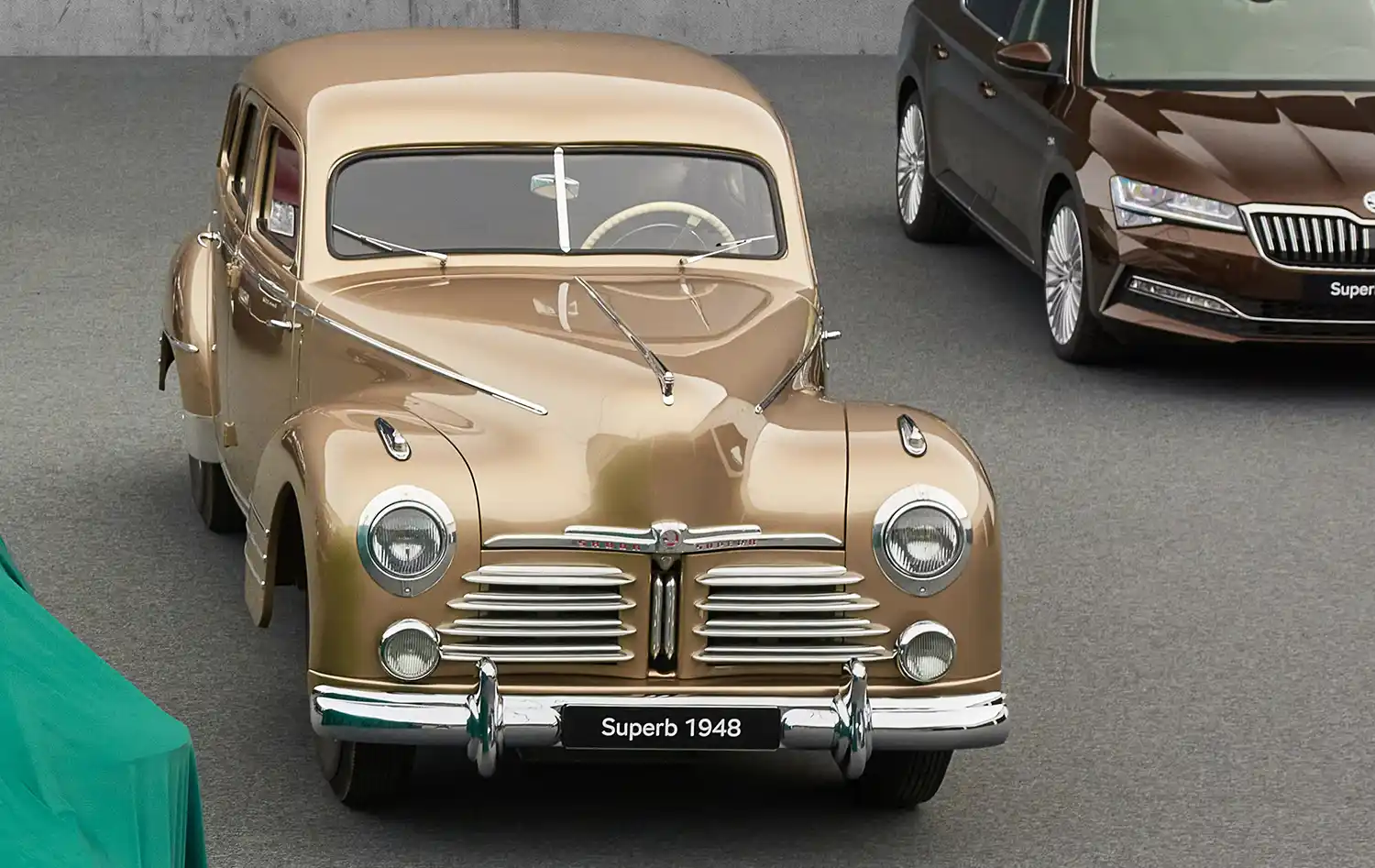
The new fourth-generation Škoda Superb will be introduced this autumn, 90 years after the launch of the historic first model of the Superb range, produced between 1934 and 1949. Over 50 years later, the first generation of the modern Škoda Superb was released, marking the Škoda brand’s re-entry to the upper-mid-class. The next chapter of the success story began in 2008 with the introduction of the second-generation Škoda Superb. For the first time, the series was available in two body versions offering state-of-the-art assistance systems. On the market since 2015, the third generation is the first Superb series to be built on the Group’s modular MQB platform. The range was expanded in 2019 to include a plug-in hybrid variant – the Superb iV.
Historic Škoda Superb, 1934-1949
By the time the historic Superb went into production in 1934, Škoda had already produced several top-of-the-range models. However, the Superb was innovative in many ways; the onboard wiring worked with a then-new 12 V system, which is still used in cars today. Along with its contemporaries, the Superb was based on an innovatively designed chassis. The traditional longitudinal frame with a channel section was replaced by an advanced backbone frame with a central tube, dividing into two beams at the front.
This design not only allowed the driveshaft to be housed in the frame’s tube but also created more room for the independent suspension, which ensured superior ride comfort. The Superb was also the brand’s first model to feature single-circuit hydraulic brakes with equal action on all four wheels. During production, engines with the recently developed OHV valve train began to be installed in Superb cars in 1938. And unlike some of its predecessors, such as the luxury Hispano-Suiza, the Superb was developed entirely in-house at Škoda.
The bodywork, which underwent considerable modernisation in 1939, was built of a timber-framed wooden body with outer metal sheet panels, allowing the Superb to be manufactured in a variety of body styles; five civilian and three military versions were rolled out during its 13-year production period. It was available with SV or OHV engines with outputs ranging from 40.5 to 70.7 kW and displacements from 2,492 to 3,991 cm3.
Most of the engines had six cylinders, the exception being the Superb 4000, which featured a V8-cylinder engine under the bonnet. This meant the Superb 4000 had the most power and the largest displacement in the series. One of the few surviving Superb 4000s is now among the most valuable exhibits of the Škoda Museum in Mladá Boleslav. Around 900 civilian and 1,600 military vehicles of all Superb variants were produced between 1934 and 1949.
Return of the flagship, 2001-2008
2001 was a year of many highlights for the Škoda brand, including its ten-year anniversary under the wing of the Volkswagen Group. The Škoda Fabia was launched as a saloon, with Škoda also introducing its signature Simply Clever concept of practical innovations. The main event of the year, however, was the presentation of the Superb hatchback after a 50-year hiatus. This raised the Škoda brand’s profile, positioning it among the manufacturers of upper-mid-class cars.
Unveiled at the Geneva Motor Show in September 2001, the first-generation Superb was built on the PL 45 chassis platform. This was widened by 100 mm for the Škoda Superb, giving it an exceptionally spacious interior. The series also boasted a comprehensive range of engines; the first modern generation of the Superb offered both petrol and diesel powertrains, ranging from a 1.8-litre four-cylinder turbo with 110 kW (150 hp) to the top version – a 2.8-litre V6 with 142 kW (193 hp). It brought with it several firsts for the Škoda brand, including bi-xenon headlamps, Tiptronic automatic transmission, the Coming Home lighting system and electronically controlled brake assist, which enhanced the braking action. The multi-link front suspension and longitudinally mounted engines were also unique among Škoda cars. In 2006, the first-generation Superb underwent a facelift, which integrated the trademark C-shaped rear-light concept.
Third Superb generation including plug-in hybrid drive, from 2015
In February 2015, the third-generation Superb was presented in Prague in a hatchback body version, followed a few months later by the estate variant. Using the Volkswagen Group’s modular MQB platform, the third-generation Škoda Superb could now incorporate all the latest technologies available.
For the first time, the model benefitted from a DCC Adaptive Chassis, tri-zone climate control and assistance systems such as Traffic Jam Assist and Emergency Assist. Adaptive Cruise Control ACC, Lane Assist and Travel Assist were also available for the Superb range. The number of Simply Clever features also rose considerably; this was the first time Škoda had offered, for example, a virtual boot release pedal, a 230 V socket for rear seat passengers and umbrellas in the panels of both front doors. After the 2019 facelift, the third-generation Superb received additional state-of-the-art equipment, such as Matrix-LED headlights, Predictive Adaptive Cruise Control and KESSY keyless opening for all doors. Most importantly the series was expanded to include a new variant – the plug-in hybrid Superb iV with 1.4 TSI PHEV engine. To date, Škoda Auto has produced over 1,550,000 Superb cars of all types and generations since 2001, of which over 780,000 are third-generation Superbs.
